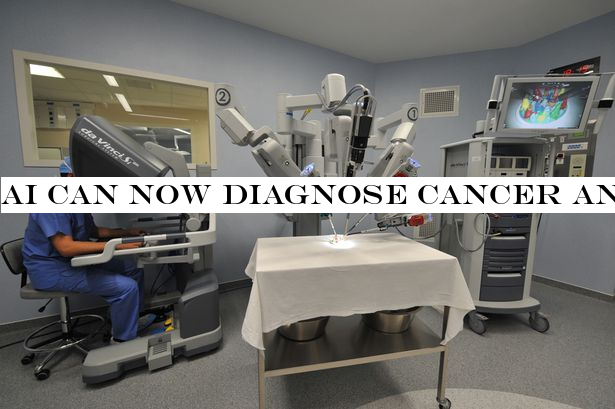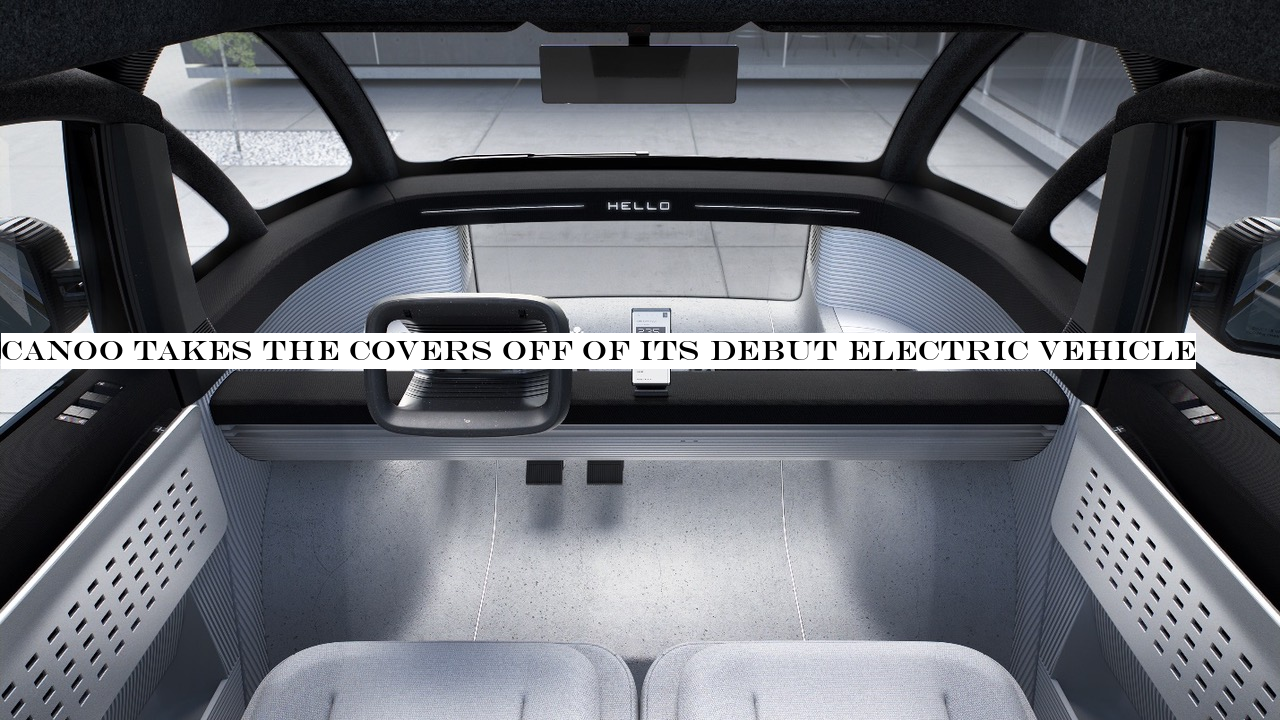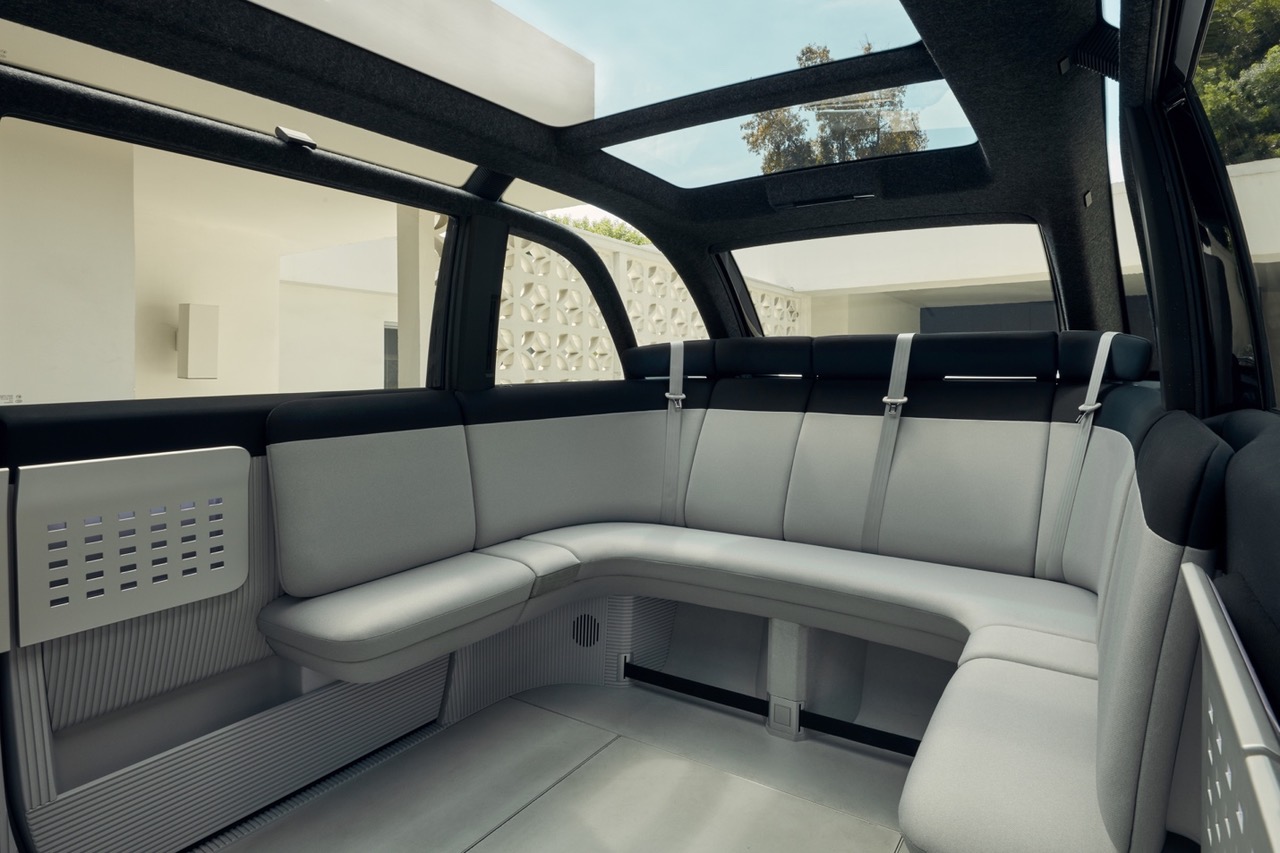Music
Trailers
DailyVideos
India
Pakistan
Afghanistan
Bangladesh
Srilanka
Nepal
Thailand
StockMarket
Business
Technology
Startup
Trending Videos
Coupons
Football
Search
Download App in Playstore
Download App
Best Collections
Technology

- Details
- Category: Technology
Read more: Google wins 'right to be forgotten' court battle
Write comment (97 Comments)
- Details
- Category: Technology
Read more: 3D printed parts used on UK passenger trains for first time
Write comment (93 Comments)
- Details
- Category: Technology
Read more: AI can now diagnose cancer and other illnesses 'as accurately as trained doctors'
Write comment (90 Comments)
DJI announced two new drones and a new initiative to support first responders during natural disasters and recovery missions with drone technologies as it moves to consolidate its position as the leading drone technology provider.
The company hyped its new multispectral drone as the worldfirst fully integrated multispectral imaging drone to enable more efficient land management and the Agras T16, which is a spray drone to apply fertilizers and pesticides to field crops and orchards.
For first responders, the company is working with pre-selected U.S.-based partners to equip state and local public safety agencies with hardware and software from the company. Initially DJI is working with public and volunteer institutions like the Los Angeles Fire Department, the Menlo Park Fire Protection District, Alameda County SheriffOffice, and the volunteer-based Public Safety Unmanned Response Team North Texas. Companies distributing and managing services include FlyMotion and Axon (which was formerly known as Taser International).
These partnerships are being pursued even as the U.S. military has officially banned the use of DJI drones over security concerns since 2017. The military still purchases DJI drones on a case-by-case basis, but there have been a number of red flags raised by U.S. defense and intelligence officials over the potential threat that using Chinese equipment may pose to national security.
&This program builds onDJIgrowing commitment to the public safety industry, as more than 900 public safety organizations across the United States, including the Los Angeles Fire Department, are deployingDJIdrones for lifesaving activities,& said Romeo Durscher, Director of Public Safety Integration atDJI. &To date, at least 278 people around the world have been rescued from peril by drones and this program will ensure that many more lives are saved by mitigating the risks to emergency responders on the ground and on the front lines of natural disasters.&
Drone hardware and software distributed through the program will includeDJImost advanced technologies including theDJIMatrice 200 series and Mavic 2 Enterprise series drones, accessories and batteries, powerful visual and thermal cameras,DJIFlightHub drone fleet management software, andDJIAeroScope for airspace management and unauthorized drone detection and mitigation. In addition,DJIwill provide technical support, repair services, and on-site manpower to help organizations more effectively and efficiently deploy drone technology in times of need.
&Over the past yearDJIhas focused on delivering enterprise-grade drone technology that enables some of the most sophisticated businesses and government agencies in America to safely and securely deploy drone technology into their daily operations,& said Mario Rebello, Vice President and Americas Regional Manager atDJI. &This year we aim to put our easy-to-use drones in the hands of farmers, agronomists, and land stewards to help manage their lands in a more efficient and environmentally friendly way, while also making sure we equip emergency responders with access to the industrybest tools and support they need to rapidly respond and save lives during natural disasters.&
DJI also took the opportunity to show off its drones as a platform for other technology developers, with FLIR Systems introducing its first multi-gas detector integrated with the DJI Matrice 210 drone for applications in chemical, industrial and environmental monitoring. DJI is allowing for even more development with the creation of a DJI X-Port, a gimbal attachment that allows hardware developers to integrate their own sensors, cameras, and arrays. The X-Port features built-in communication APIs, SkyPort integration, and . a gimbal debugging interface to bring more sensors to market.
Finally, the company introduced new service protection plans like the &Enterprise Shield Basic Renew&, which offers a reduced price product replacement for a damaged drone within one year of purchase and a &Shield Plus Renew& plan, which offers unlimited product replacements or free repair services within a year for the coverage amount a company purchases.
- Details
- Category: Technology
Digital identity startup Passbasehas closed a $3.6 million seed round, led by Cowboy Ventures and Eniac Ventures, with participation from Seedcamp and other European investors.
The 2018 founded startup bagged a $600k pre-seed round earlier this year for its full-stack identity engine with a privacy twist.
The latest tranche of funding will go on growing the team and sales channels in the US and Europe, says co-founder Mathias Klenk. &Our goal is to build an API-first company, so building a strong core organization is key for us to be able to fully focus on securing partnerships with complementary services,& he tells TechCrunch.
&By the end of next year, we aim to have our consumer application rolled out so that individuals can leverage the core value proposition of our service and businesses can reap the rewards of seamless reauthentication,& he adds. In terms of clients, our goal is to move up in scale and conduct pilots with some of the larger players in our target segment.&
Passbase launched an open beta in May and has been running tests over the summer, according to Klenk, who says around 15 companies have been actively testing the platform — claiming 300+ businesses have &expressed interest& in the product.
Earlier testers hail from industries including healthcare, gig economy and mobility, with &exciting use cases in the pipeline from recruitment to financial services that will launch soon&, per Klenk.
What is the product? Passbase dubs it ‘Stripe for identity verification& — meaning itoffering APIs to make it easy for developers to plug and integrate a range of consumer-friendly identity checks into their digital services. Such as selfie video scans and identity document scanning. (Passbase is itself plugging into ID document verification services from a range of partners, augmented with add-ons such as a liveness check.)
It touts &NIST-certified facial recognition, forensic ID authenticity analysis, and a patent-pending zero-knowledge sharing architecture& as forming part of its stack.
The overarching goal is to become a trusted intermediary exchange later between businesses and end users — aka a &consent layer& — by building out a developer platform to support the integration of verification technologies into web services, while — on the consumer end — allowing web users to limit who gets access to their actual data. Hence the promise of privacy baked in.
&Our vision is to build out an open identity system that encourages services to hold less information, yet be sure of the quality of the result they are receiving,& adds Klenk.
Consumers can submit personal data to verify their ID, such as a facial biometric scan and identity document scan via their webcam, without having to rely on their data being exposed to and potentially mishandled by non-specialists — instead they have to trust Passbasetech architecture.
It also plans to launch a (free) consumer app early next year that will provide end users with controls over the information they&re sharing for ID verification and also serve up insights on how itbeing used — to give people &a holistic view and analytics of their data exposure online&, as Klenk puts it.
Though it won&t be requiring such highly engaged participation from end users — to ‘claim their digital identity& by downloading its app.
&Our aim is to incorporate your digital identity into the verification flow,& he says, adding: &If you do not care enough about your digital footprint, you do not have to claim your digital identity and can process through a transactional relationship like with any other identity verification provider. However, with a combination of your biometrics and unique identifier, we have the first building blocks of creating a universal digital identity.&
Klenk says he expects access management and account recovery to become an important area for Passbase as — or, well, if — consumers adopt its idea of a &verified digital identity& which they can control.
&In terms of businesses accepting this, of course there are network effects in play,& he goes on. &That being said, identity works as a stack and if we manage to tie the root identity to additional credentials (through partnerships) like background checks, credit scores etc, it would be difficult to pass on using such a system. So at the end of the day, it comes down to who can offer the most full-stack solution.&
Thereplentiful and growing competition in the digital identity management space — including for privacy-protecting sign-ins now Apple has skin in the game — so Passbase certainly has its work cut out to get traction. Though ittargeting fuller ID checks, arguing that a username and password are inadequate for many of the authentication checks which digital services now demand, given therea platforms offering to connect you to pretty much anyone these days, be it a medical professional, babysitter, taxi driver, cleaner, delivery driver or potential life partner.
Klenk says Passbasedefensibility &comes from the B2B2C approach whereby we are creating a useful service for businesses from day 1, while enabling data ownership for consumers in order to create a more secure and privacy-preserving digital future&.
It does also have patents pending in the US.
&For some of the incumbents in the market, it is complicated to completely shift their business model, whereas for newer competitors, it comes down to the operating model and execution,& he also argues of the competitive landscape.
If Passbase can make their full-stack stick, the plan is to monetize via the developer platform where they&ll offer businesses their first 50 verifications for free.
&Afterwards, our pricing has a platform access fee combined with a per verification cost. The reason being that as we build out more and more modules (ID document verification, phone number, living address, email, work permit) we plan to move towards a SaaS model, offering businesses all kinds of identification services for a predictable cost,& he says. &This is why our pricing also reflects a lower variable cost and increased subscription fee, as volumes grow.&
A self-service b2b product will launch next month — meaning any business will be able to tap PassbaseAPIs and integrate its verification service. The consumer app will naturally follow later.
&For the consumer, the product will always be free as we believe that the data needs to be given back and belong to consumers,& Klenk adds.
- Details
- Category: Technology
Read more: Passbase grabs $3.6M to power privacy-preserving online ID checks
Write comment (93 Comments)The Los Angeles-based startup Canoo has finally unveiled its first model, the eponymously named canoo.
The Canoo designers have departed pretty radically from the traditional designs that other electric vehicle manufacturers have favored going with something that looks more like a VW Microbus than the sport utility vehicle that Byton is aiming for, or Tesla and Fiskersportscars and sedans or Rivian electric trucks.
Remarkably, Canoo has completed the design and engineering of its first model in just 19 months and is preparing its vehicles for production through a contract manufacturer. The first cars are slated to appear on the road by 2021, according to the companycurrent leader, Ulrich Kranz.
Kranz, who initially came on board as the companychief technology officer, took over the day-to-day operations of Canoo after Stefan Krause, Canooco-founder and chief executive, stepped away from the company in August for personal reasons, as The Verge previously reported.
The two key features that Canoo was designing for were space and value, according to a statement from Kranz, and the first car from the company has plenty of both.
Canoo has beta cars on site at its Los Angeles headquarters where prospective partners and customers can test out the vehicles, which were made by an undisclosed contract manufacturer based in Michigan. &We will crank out a couple of cars which will be used to verify and confirm the simulations we have done so far,& says Kranz.

Canoo has spent the past year discussing the development of its prototype vehicle with the manufacturer so the company could provide advice on how to design and develop the car.
Canoo will launch its first vehicles in the Los Angeles market and expects to not only provide its &skateboard& platform for its own vehicles, but potentially work with other customers that would put their own cabin on top of the Canoo platform, Kranz says.
The company intends to go to market with an entirely new business model by providing customers with its cars for a monthly subscription fee. That service will likely include perks like automatic vehicle registration, maintenance, insurance management and charging through a single app on a customerphone. The idea, the company says, is to bring convenience and afforability of a Netflix movie service to the auto industry.
The first vehicle will have enough room for seven people, with the interior space of a large sport utility vehicle in a car with the footprint of a small compact car, the company says. In the back, seats are positioned in a semicircular formation against the sides and rear of the vehicle, while the front cabin is arranged like a sofa, according to Kranz.
&Cars always have been designed to convey a certain image and emotion; however, we chose to completely rethink car design and focus on what future users will actually need. Thus, we came up with this loft-inspired vehicle,& says Richard Kim, in Charge of Design at Canoo. &When you subscribe, you think differently about a car & now the value is defined by the user benefit. We implemented the Bauhaus philosophy, which is centered around minimalism and functionality, and started with the reduction to the absolute minimal need. Next, we applied that approach to the seamless connectivity with the personal devices customers care most about & their phones.&

Entertainment systems are dependent on customers& own devices and the canoo is compatible with both iOS and Android operating systems. Rather than having a central display, the company expects that drivers and passengers will want to use their own navigation and apps in the vehicle.
Kranz says it was also made with autonomy in mind, and while the current system is arrayed with seven cameras, five radars and 12 ultra sonic sensors to provide level two autonomy. Kranz is especially proud of a new feature which has a video camera focused on the driver to monitor their actions and avoid unnecessary alerts when they&re operating a vehicle safely.
&We watch the face and the meaning of the driver with the camera& Kranz says. &When the camera recognizes that the driver pays attention… like looking to the right side and checking blind spots, we don&t warn them with an alert… Because people sometimes turn off the warning systems.&
The heart of the Canoo system though, is its &skateboard& architecture, which houses the batteries and the electric drivetrain in a chassis underneath the vehiclecabin. All of the companies vehicles will have the same base and different cabins to create all sorts of vehicles for different applications, the company says.
The first vehicle has a five-star safety rating and includes driver and passenger airbags throughout the canoo. The skateboard platform can also support dual, front, or rear motor configurations the company said.
Finally, the company says it will have the first truly steer-by-wire vehicle on the market without a hardware connection between the steering wheel and the wheels.
Steering is conducted by electric signals only, with a fully redundant control system that the company says has some long-term benefits for future designs. Steer-by-wire offers both weight savings and gives Canoo flexibility on where to locate the steering wheel to accommodate different designs and . driver positions.
As for range, the companyfirst car has a range of 250 miles and can reach an 80% charge in less than 30 minutes. Its battery pack is fastened directly to the skateboard structure and saves more space since thereno separate structure. The battery also is able to provide torsional rigidity and support for the vehicle since its resting directly on the chassis.
Kranz wouldn&t say how much Canoo will charge for its subscription service, but said that the company can reduce its cost because it can depreciate the vehiclevalue over a seven-to-ten year timeframe. &These savings we will be able to give back to the customer,& he said. And even with the low price, Kranz expects to make a mint with his new company. &We want to be the first EV company that makes a profit with an EV,& he says.
The rental model will help as will the companyconservative rollout plan. Kranz says that Canoo will start offering its subscription vehicles in one geography and scale slowly from there.
&We will roll out city-by-city,& he says. &Eight to ten cities represent more than 70% of all the electric vehicle population [so] there is no need to provide our EV nationwide.&
The plan for 2021 is to launch in Los Angeles and have another eight cities account for the companyU.S. market. That means four on the West Coast and four on the East Coast, according to Kranz.
&After the launch in the U.S. we are considering launching the vehicle in China… There are 18 cities that represent 75% of the EV population in China,& he said.
The controlled expansion plans and modest goals for geographical reach should be a big benefit for the company, according to Kranz.
&It gives us the big advantage that we can easily control our fleet and we are ramping up in a more conservative way and we are not bragging that we can churn out hundred thousand of cars,& he says. &We know how difficult it is to manufacture a good quality car at a high pace.&
[gallery ids="1886205,1886206,1886207,1886208,1886209"]
- Details
- Category: Technology
Read more: Canoo takes the covers off of its debut electric vehicle
Write comment (90 Comments)Page 800 of 5614

 19
19





